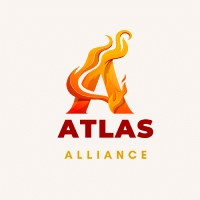Capacity management in agile: boost team productivity and morale
In the fast-paced world of agile development, managing your team's capacity effectively can be a game-changer. By mastering capacity management, you can boost productivity, enhance team morale, and ensure successful project delivery. Discover how to plan your capacity, allocate resources wisely, and employ the right tools to keep your team motivated and cohesive. Ready to optimize your agile workflow? Let's dive into the strategies that make a real difference.
Understanding capacity planning in Agile
Capacity planning in agile is a critical process that helps teams determine the amount of work they can realistically complete in each sprint. It involves calculating the team's ability to handle tasks within a set period by considering member availability, skills, and historical data. This ensures that teams do not overcommit and can deliver on their promises.
A lire aussi : Can Deep Learning Algorithms Accurately Predict Seismic Activity for Early Warning Systems?
Importance of capacity planning for Agile teams
Effective agile capacity planning is essential to avoid assigning work without understanding team availability and utilization. This can lead to project failures, as teams may struggle to meet deadlines or deliver quality work. By accurately assessing capacity, teams can optimize their workflow and ensure tasks are completed efficiently.
Key elements of effective capacity planning
Understanding Team Capacity: This involves assessing the total development hours available in a sprint, factoring in public holidays and individual time off.
A lire aussi : How Might Bioacoustic Sensing Transform Wildlife Population Monitoring?
Estimating Work: Use story points or engineering hours to estimate the effort required for each backlog item.
Prioritizing Tasks: Focus on high-priority tasks that align with the sprint goals.
Considering Team Velocity: Measure the average number of story points or tasks completed per sprint to predict future performance.
Adjusting Plans Based on Feedback: Regularly reassess capacity during sprint planning and adjust the sprint backlog as needed.
Effective capacity management strategies and agile workflow optimization are crucial for maintaining a balanced workload and ensuring project success.
Techniques for effective Agile capacity planning
Effective capacity planning agile is crucial for successful sprint execution. There are two primary methods: commitment-based and capacity-based planning.
Commitment-based vs. capacity-based planning
Commitment-based planning relies on the team's commitment to complete certain tasks based on historical performance. Conversely, capacity-based planning calculates the available engineering hours to determine what can realistically be achieved. This method provides a more precise approach to effective resource allocation.
Steps for calculating team capacity
- Establish Total Hours: Determine the total number of hours available in a sprint, considering public holidays and individual time off.
- Utilize Story Points and Engineering Hours: Estimate the effort required for each backlog item using story points or engineering hours. This helps in managing team capacity effectively.
- Assess Team Velocity: Measure the average number of story points or tasks completed per sprint to predict future performance.
Sprint planning best practices
- Prioritize High-Value Tasks: Focus on tasks that align with sprint goals to maximize agile team productivity.
- Adjust Plans Based on Feedback: Regularly reassess capacity during sprint planning and make necessary adjustments to the sprint backlog.
By following these techniques, teams can ensure they do not overcommit, leading to improved task completion and overall project success.
Tools and methods for enhancing team productivity and morale
Enhancing team productivity and morale is essential for maintaining a high-performing agile team. Utilizing the right agile productivity tools can significantly boost productivity and improve team cohesion. Tools such as Jira, Trello, and Asana help in tracking progress, managing tasks, and visualizing workflows, making it easier to manage workload and avoid burnout.
Techniques to avoid burnout and manage workload
Preventing burnout is crucial for sustaining team motivation and productivity. Implementing regular breaks, promoting a healthy work-life balance, and encouraging open communication can help manage workload effectively. Techniques such as timeboxing and the Pomodoro Technique can also be beneficial in keeping tasks manageable and ensuring team members do not feel overwhelmed.
Methods for improving team collaboration and morale
Improving team collaboration and morale involves fostering a supportive and inclusive environment. Regular team-building activities, celebrating small wins, and providing continuous feedback are effective team motivation techniques. Encouraging knowledge sharing and using collaboration tools like Slack or Microsoft Teams can enhance team cohesion and ensure everyone is aligned with project goals.
Strategies for fostering professional growth and skill development
Encouraging professional growth and skill development can significantly enhance both productivity and morale. Providing opportunities for team members to attend workshops, conferences, and training sessions helps them stay engaged and motivated. Implementing a mentorship program and setting up regular one-on-one meetings for personalized feedback and career planning can also contribute to a team's professional growth. By investing in their development, you not only improve individual capabilities but also strengthen the overall performance and satisfaction of the team.
